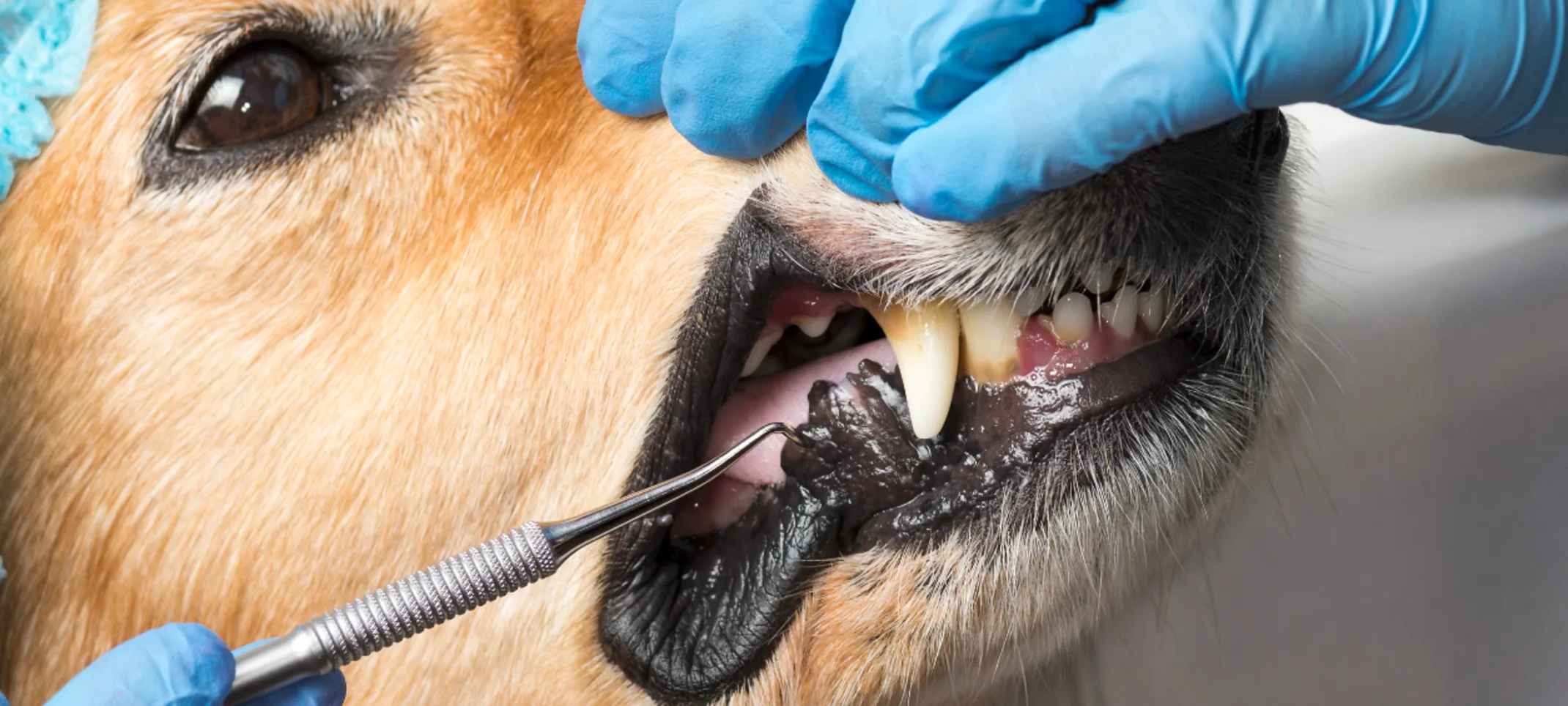I-20 Animal Medical Center
Oral Cancer Treatments

Oral cancer is very rare in humans but very common in dogs. It has been estimated that seven percent of all cancers in dogs are oral. As with all cancers, early detection and screenings are critical for treating oral cancers. As a pet owner, you should routinely check your dog or cat’s body for bumps, growths and swollen areas. You should also look in your pet’s mouth regularly and see if you find any area that is swollen, red, bleeding or ulcerated or any area that has a color change. These are the first signs of oral cancer.
Almost all oral cancers share the same symptoms:
Increased salivation
Swelling of the pet’s cheeks, tongue, lips or other oral tissues
Hesitation to eat hard food or chew on a favorite toy
Bleeding of the mouth
Bad breath
Weight loss
Pawing at mouth
Difficulty swallowing
Change in mood
Reluctance to play any game that requires using the mouth
Unfortunately, these can be the same symptoms as a broken or abscessed tooth, gum disease or oral trauma. A dog or cat exhibiting any of these symptoms should be checked out immediately at I-20 Animal Medical Center to find the cause of their change in behavior.
These oral cancers make up the majority of cases we see at I-20 Animal Medical Center.
Fibrosarcoma in Pets
Fibrosarcomas are malignant tumors that have a tendency to grow to a large size, invade deeper structures such as tendons, fascia and muscles and ulcerate the epidermis. These tend to be like an octopus and grow tentacles into surrounding tissues. These typically show up as masses in the pet’s mouth and can range in size from the size of a pea to a golf ball. They can be in the cheek, on the tongue, on the palate or anywhere else in the mouth. These cancers are aggressive, so we treat them aggressively at I-20 Animal Medical Center. If caught early, we can treat fibrosarcomas with surgery and radiation/chemotherapy.
Squamous Cell Carcinoma in Pets
Squamous cell carcinoma is not nearly as aggressive as the other cancers can be, but it is still a very serious cancer. If it occurs toward the front of the pet’s mouth, it is not as serious as when it is near the tonsils, throat or other lymph nodes. Treatment has a high success rate if we catch it early. This is by far the most common tumor in cats and the second most common in dogs.
Squamous cell carcinomas (SCCs) tend to look like sores in the mouth. Early on, they will show a change of color and/or texture and will often present as a small lesion or canker sore. Later, they can be very large and aggressive and will look like something is eating away the tissue.
Treatment at I-20 Animal Medical Center includes excisional removal, radiation therapy, chemotherapy and photodynamic therapy.
Melanoma in Pets
Melanomas can be very aggressive if they are not treated early. Oral melanoma and other oral cancers can present as pigmented or non-pigmented fleshy masses anywhere in the pet’s mouth. Melanomas have a very bad reputation for metastasizing early. This makes long-term survival poor. Early and aggressive treatment is very important. At I-20 Animal Medical Center, when we find melanomas, we take chest X-rays, dental X-rays (full mouth series) and blood work to make sure the cancer hasn’t metastasized to other areas like the pet’s jaw bone or lungs.
If caught early, melanomas can usually be surgically excised (cut out). Depending on the size and nature of the cancer, chemotherapy can also be part of the treatment modality as well as radiation treatment.
Osteosarcoma in Pets
Osteosarcoma is a cancer of the bone. While it is more common in the limbs, it can be found on occasion in the mouth (upper or lower jaw). Since it metastasizes, we typically take chest X-rays at I-20 Animal Medical Center when a pet has osteosarcoma so we can make sure other areas are not highly involved. We do a simple biopsy of the tumor and then send it to the lab for verification.
Oral osteosarcoma is treated with greater success than osteosarcoma of the limbs or other bones. Surgical removal must be complete to prevent recurrence. We see it recur on occasion, but this is not common. Radiation and chemo have not proven to lower recurrence. Complete removal of all affected bone is the best treatment.
Epulis in Pets
Oral epulis has three subcategories: fibromatous, acanthomatous and ossifying. An epulis is the most common type of non-cancerous (benign) tumor in a dog’s mouth. We call these benign tumors because they do not spread to other parts of the body. However, an epulis can be “locally invasive,” which means that it can grow into the tissues surrounding its initial location. Gingival hyperplasia falls into this category.
Fibromatous Epulis
An odontogenic tumor arises from the tissue that is responsible for the formation of the pet’s teeth. Odontogenic tumors are of limited growth potential and do not recur if they are adequately excised.
The peripheral odontogenic fibroma in people is a rare condition, whereas the fibromatous epulis is common in dogs.
Acanthomatous Epulis
Acanthomatous epulis is now called canine peripheral ameloblastoma or canine acanthomatous ameloblastoma. They can be locally aggressive and should be surgically removed.
This tumor originates in the periodontal ligament, which is composed of thousands of tiny ligaments that hold a tooth in the bone. This epulis is a highly invasive one, therefore it is considered to be a type of cancer. Like a fibrosarcoma, the surgery is aggressive as we typically remove the growth and 1cm of tissue and bone surrounding it. Surgery, if done properly, is often curative. Radiation can also be used on larger lesions or on locations that are difficult to treat surgically if the veterinarian feels that it was not all excised during the operation.
Ossifying Epulis
These differentiate from a fibromatous epulis in that they have bone cells among the soft tissue. Ossifying and fibromatous epulis tend to grow slowly and do not invade bone. These tumors are odontogenic in nature and can involve the periodontal ligament, so we often have to take out the involved teeth. Since these tumors grow slowly and are not cancerous, per se, aggressive treatment, other than surgical removal, is not recommended or warranted.
Schedule your pet’s dental care at I-20 Animal Medical Center by calling 817.478.9238.
